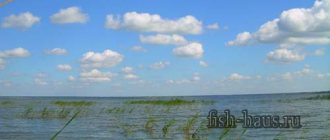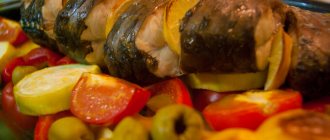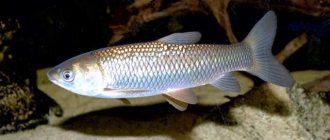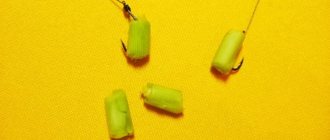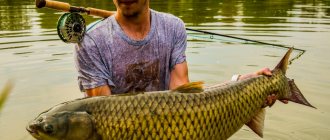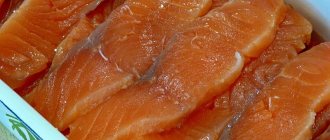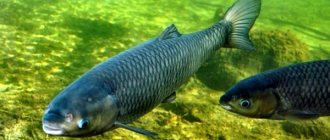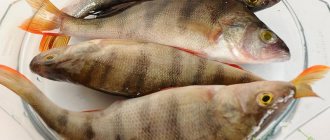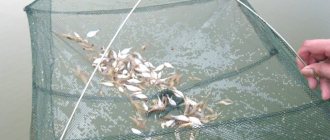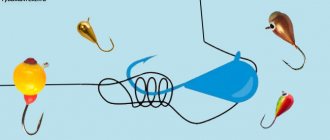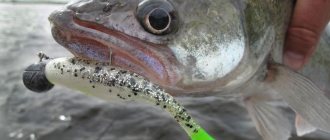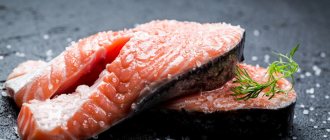Every fisherman wants to catch a fish that he can tell his family and friends about as his most valuable catch. And for most, such a trophy is grass carp.
This is a cautious fish; it is difficult to catch it without preparation, but if you know its behavioral characteristics, as well as the secrets of fishing, then it is still possible. Grass carp is strong enough to break a simple fishing rod, so you need to pack strong gear.
General information
This fish belongs to the carp family, although in appearance it is not very similar to either carp or carp. Its dimensions are quite impressive, body length can reach 120 cm, and weight up to 32 kg. This is a herbivorous fish that cleans water bodies by absorbing large amounts of algae, so when simultaneously bred with carp, these fish do not compete due to their different food supply.
It appeared in Russian reservoirs thanks to artificial breeding; East Asia is considered its homeland. Naturally grown, this fish is found only in some rivers, for example, in the Volga and Yenisei.
This fish is a frequent visitor to paid reservoirs, since it is very demanding on the cleanliness of the reservoir and the amount of oxygen in the water.
Grass carp usually gather in flocks, as a result of which they have high survival rates. In winter they hibernate. Spawning occurs in the first months of summer and occurs only in running water.
Catching carp on reeds
Fishing for carp, the gear for which must be strong, since the fish is very strong, is carried out in warm, calm weather. Young plants are usually used as bait. Catching carp using reeds is very effective. But in order for such bait to serve the fisherman well, it is important to adhere to several rules. Reeds no longer than 1 m are cut, and there should be young leaves and shoots on the stem.
It is known that this individual searches for food both at the bottom and at the very surface of the reservoir, therefore, when the stem of the reed falls into the water, grass carp suddenly grabs it.
This type of fishing has its own subtleties:
- First, you need to learn how to present the bait correctly. The hook should be carefully disguised in the leaves of the reeds, and the fishing line should be wound around the stem.
- Secondly, make the correct cast, which is done at the very edge of the reed thickets. Thirdly, it is better for the reed to remain afloat, then it will arouse keen interest among the fish.
- Fourthly, if there are no foreign objects around the bait, there is a greater chance that cupid will pick it up. The float in this case will only get in the way.
When fishing, it is important to maintain complete silence so as not to arouse suspicion among very cautious and shy fish.
Habitats
The food base of the carp is algae and other various plants. From time to time he doesn’t mind eating worms, larvae, etc. His daily diet depends on his age; the older he gets, the more plant foods he eats. Sometimes in a day he eats an amount of food equal to his own weight.
It lives in bodies of water where people have inhabited it. Since they wanted to use it to clean water bodies of industrial importance, it can often be found on water bodies intended, for example, for cooling power plants.
Cupid spends most of its time at a depth of 1-2 meters, therefore, given its timidity, it is necessary to behave very quietly. Sensing danger, he can hide among the algae, and catching him from there becomes very problematic.
Nozzle for grass carp
One of the main advantages of flat fishing is the presentation of a special, dedicated bait among the bait. In this case, the flat feeder should fall to the bottom in an already fed area.
About 20 years ago there was much less information about fishing methods, gear and bait. Everyone knew that carp feeds on vegetation, so it was believed that the best bait for it were reeds, thread-like grass, cucumber, watermelon, etc.
But years have passed, fishermen who engage in carp fishing began to use Western models of fishing, feeding and feeding bait. And in recent years, carp have been caught well using “carp” delicacies, using almost the same methods of flavoring and feeding.
The list of suitable attachments is very long. Much depends on the characteristics of the reservoir.
Popular attachments:
- Corn - very often used for bottom fishing on a flat feeder. They use boiled corn grains, fermented (drunk, fermented) corn and ready-made natural and “pseudo-natural” grains with various odors. Frozen corn on a hook, with a leash among the same grains, is a bait and bait for carp on many reservoirs.
- Boilies, granules with floating Pop-up baits. If there is carp in a pond, then when catching carp with boilies, it often gets hooked. Depending on the local habits of the fish, you can use boilies based on cornmeal and sunflower seeds. Much depends on the local preferences of the fish.
- Cut young cucumbers, young leaves of peas, clover, the hard part of a ripe watermelon, young shoots of reeds are also used for hair installation. They are applied in several layers and alternated with floating nozzles.
- Worms, maggots, whitebaits - contrary to the belief that cupid is purely vegetarian - are also used, but rarely. With such bait, this fish may end up as bycatch.
There is a good video taken underwater in which a cupid is seduced by a floating bait:
Under the water
Fishing calendar
Grass carp is a heat-loving fish, so you should remember this when going fishing. The best bite is observed in the summer, and in winter this fish stops biting altogether.
in spring
Usually active fishing begins in the second half of spring. The fish begins to slowly recover after winter, replenishing the lack of nutrients with worms, bloodworms and young vegetation. He can find such food only in shallow water.
For fishing in shallows, you can safely use a float rod. You need to feed in small portions so as not to overfeed the already sedentary fish.
Spring carp fishing is an excellent chance for beginners to pull the carp ashore without problems, because it has not yet had time to gain strength to adequately resist the fisherman.
In summer
In summer, carp are caught only with plant baits
Summer is rightfully considered the best time of year for catching grass carp. Already from the first days of June you can observe a steady bite. In mid-summer, when the spawning period usually ends, you can catch zhor, and the catch then promises to be good.
The spawning itself begins when the water temperature reaches 20-25°C, which usually falls in June. During spawning, and a few days after it, fish activity is practically zero.
Fishing in summer is somewhat complicated due to the abundance of natural food in the reservoir. It is possible to tempt fish only with filamentous algae and other plant baits.
in autumn
With the onset of autumn, fishing becomes unpredictable. The good activity of the fish is abruptly replaced by its absolute ignoring of any bait.
You can hope for success in warm weather with little wind.
After the onset of prolonged cold weather, accompanied by precipitation, grass carp ceases its activity. The first frosts have a negative effect on the bite. Cupid goes to the wintering pits and stops pecking altogether.
Catching grass carp: underwater filming. Vadim Novodran
Vadim Novodran writes about targeted fishing for grass carp. The author's reasoning is supported by unique footage of underwater filming on Lake Medvezhka.
Since childhood I have been interested in catching peaceful white fish. Since 2011, I began to regularly fish on Medvezhka, and since 2013, I began to take part in competitions that were held on this reservoir. Trophy fishing has become the main passion of my life.
On June 11, 2014, my daughter and I caught a “Big Cupid” that weighed 21 kg 700 g.
This event prompted me to write my first articles about fishing on Medvezhka, which I published on the Internet on the Sportfishing website.
Soon another important event occurred: an acquaintance with the diver, the “amphibian man,” Grigory Borisovich Tynda, a great enthusiast who at one time compiled an underwater map of the depths and relief of Medvezhka. In addition to establishing order under water, Gregory was engaged in underwater filming of local inhabitants, studied their habits, habitats and paths, and tried to establish contact with them. Looking ahead, I will say that he managed to do this just with cupid, a mysterious and very cautious fish.
That’s how the idea arose to film the feeding fish underwater at the fishing point, capture the bite on video and see with your own eyes how carp and grass carp take the bait. The crystal clear water of Medvezhka made it possible to film at a sufficient depth and reveal many underwater secrets.
First underwater filming
Gregory liked my idea. The first filming was scheduled for June 9, 2015.
The day before I arrived at the reservoir, chose a promising fishing point, fed it and after a while began to catch fish. The next morning Grisha arrived with all the necessary equipment, swam along the fishing line to the nozzle, installed the camera and returned to the shore. I spray-fed the fishing area and... half an hour later the only rod participating in the experiment “steamed up”!
The joy knew no bounds! We made it! The first fish, a carp weighing 12 kg, became a participant in our underwater film.
Grass carp: features
White carp is a fish of the carp family. It feeds on higher underwater and above-water plants. Active in our latitudes from May to October. Heat-loving. If the water temperature drops below +10, it stops feeding. Very gluttonous. In the warm season, it is capable of absorbing a volume of food within a day that is twice the fish’s own weight. Grows up to 120 cm in length, up to 40 kg in weight. It does not reproduce naturally in our reservoirs, since for this process it needs very warm water with a weak current.
Interesting fact: food in the digestive tract of the carp is digested by 50%, so its feces are very attractive to its closest relative, the carp. Therefore, you can almost always assume that if a carp is feeding somewhere, there may also be carp nearby.
Since cupid is a schooling fish, when fishing for it you can count on catching several fish in a row. The correct choice of fishing location and constant maintenance of the availability of food at the fishing point guarantees a long stay of grass carp on the feeding table. Moreover, as can be seen from our video, after catching one individual, all the others take to their heels, but quickly return - after one and a half, two minutes. Feeding with spomb not only does not frighten the cupid, but only provokes it. Slowly falling particles of food cause food excitement and excitement in the fish.
It is these behavior characteristics of the cupid that fishermen need to take advantage of, especially during competitions. When fishing occurs at long distances, the carp completely loses caution, gathering on the surface, literally feeding from under the spomb.
It is clear that this behavior of carp is typical for deep reservoirs with a decent density of fish, which is Lake Medvezhka. But, nevertheless, many of these behavioral features are also characteristic of fish living in reservoirs with a depth of two to three meters.
In this context, I recall a two-day session on a small reservoir near the village. Orlovka (Donetsk region). We spent the second day from Sunday to Monday at the pond with a friend. We managed to collect a large number of grass carp in our swim. We caught it from the bottom using a floating bait. It was a fishing eldorado! Individuals weighing 4-5 kg were caught with enviable consistency from the evening, all night until lunch! Correctly chosen tactics, skillful feeding and, of course, silence on the reservoir (a rarity on many “pay zones”) made the fishing unforgettable.
Targeted fishing for grass carp
If you want to purposefully attract and catch grass carp, then grains will help you with this, and in large quantities - both fermented and simply boiled, especially wheat and corn. The latter can and should be used as a nozzle, raised slightly above the bottom. Floating artificial corn, pop-ups and all kinds of “snowmen” of neutral buoyancy are very good at attracting and catching quite interesting fish.
Let's return to Medvezhka. From our underwater filming we can see what feeding style is typical for grass carp. It is radically different from the feeding style of carp. All due to the anatomical differences in the jaw apparatus of fish. Carp, like a vacuum cleaner, sucks up all the edible food and more in its path, then spits out the inedible. Cupid, on the other hand, selects food more selectively, capturing it with his large lips.
This video shows grass carp sucking on a pink pop-up
Based on these differences, you can build a tactic for catching cupid. Although the experience of fishing on Medvezhka shows that the classic carp rig very often catches grass carp too.
Cupid can be caught both with a bottom bait and a floating one. The leash length is standard (15-20 cm). But the shape and size of the hook are of great importance for successful fishing without slipping. The point again is the anatomical features of the fish’s mouth. If the carp has a fleshy lower lip with a small mandibular bone, then the carp has the opposite - a developed lower jaw. And when hooking with a small hook with a narrow grip, the much-desired trophy often disappears, because the hook digs into the thin mucous membrane above the bone and either unbends or simply flies out when fishing. Therefore, to successfully catch carp, it is better to use large-sized hooks - two, four, wide gap type.
There are also differences in the mechanics of hooking between carp and grass carp. The carp vacuums up the bait, literally crawling with its belly along the bottom; the carp needs to tilt 45 degrees relative to the bottom, then level off. Therefore, it makes sense to make the leash longer than the carp leash. Otherwise, the chances of a normal detection are reduced.
And, of course, it is easier for cupid to pick up a floating or at least a neutrally buoyant bait.
This fragment of our video clearly shows how inconvenient it is for cupid to pick up a bait from the bottom.
Cupid was not detected, taking a tandem of two boilies: the 26th boiled and the 24th dusty
When Grigory and I were filming a video about carp, an annoying cupid kept getting into the frame. I decided to cut off the carp bites by enlarging the bottom bait, placing a tandem of a 26th boiled boilie and a 24th dusty one on the hair.
There were attempts, but no results. But installation with a pop-up, with the bottom raised by only 2-3 cm, easily coped with the task.
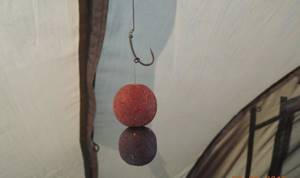
Separately, we need Fr. Jumps in atmospheric pressure, changing thermocline, lack of wind and other reasons force fish to move in search of comfortable conditions in the water column. And if the same cupid is not caught from the bottom, you can look for it, for example, near the surface.
This video demonstrates the answer to the question: why does cupid bite “on the shore”
Many manuals have been written about zig-rig fishing tactics. I just want to point out the fact that in deep reservoirs, such as Medvezhka, feeding semi-liquid groundbait (soup) using spomb can bring success. For small fish, in order not to frighten the fish, they use dry floating food, delivered to the fishing site with a slingshot or ladle.
Separately, I would like to say that the cupid fish is smart, careful, sees well and does not rush headlong into the tasty morsel. Despite the delivery of a dedicated nozzle, a certain amount of time passes before it ends up in the mouth. The characteristic winding of circles at the fishing point is clearly visible in many videos.
Camouflage of equipment is of great importance, especially in reservoirs with clear water. Incorrect position of the leadcore, a sinker that stands out in color at the bottom and other little things are very alarming to the fish.
In this video, you can clearly see how the cupid swims warily near a clearly visible leadcore. The bite on the “snowman” occurs only when the fish swims up from the opposite side. The result was a cupid weighing 15 kg.
Many fish swim warily past the bait. The bite happened only when the fish swam from the side opposite to the leadcore.
Here is this handsome guy weighing 15 kg!
Another fact in favor of the intelligence of cupids. Over the past five years, only four large carps from 20 to 22.5 kg have been caught on Medvezhka. Why are they rarely caught? After all, there are many large fish of this species in this reservoir.
This is evidenced by numerous underwater observations by diver Gregory. Video footage confirms this fact. But individuals weighing 9-12 kg are regularly hooked.
On fine, sunny and windless days, going up the hill, you can see an impressive picture: a flock of cupids on the surface of the lake: 5-6 separate large individuals and 10-15 smaller ones. If these 10-15 weigh about 12 kg, then how much do the big ones weigh?
Here's some truly unique footage: cupids feeding from the hands of a diver.
There is a hierarchy in a flock of cupids. There are scout fish who are the first to explore the feeding area. They are usually smaller in size than those that circle at a distance. Grigory Borisovich describes his underwater observations in the article: “Close contact: man – grass carp.”
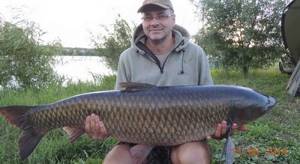
Quite a lot of material has already been filmed. Looking through it, you can glean more and more new information, make new conclusions about the habits and fishing of this wonderful fish. In the future, we plan to go even further and organize filming of the wintering areas of carp.
In conclusion, I bring to your attention this half-hour underwater video, after analyzing which we can draw some, in our opinion, important conclusions about the habits of grass carp.
Vadim Novodran specially for carpfishing-media.com. Article originally published in CarpFishing Media Magazine #4 (December) 2021
Use of site materials is possible only with maintaining an active link to the source
comments powered by HyperComments
Fishing gear
Small specimens can be caught with any fishing rod, even expensive thin-walled models. This is justified if grass carp is not the main object of fishing. For targeted catching of trophy specimens, ordinary tackle is no longer suitable, since it cannot withstand powerful resistance.
Plug
Modern plug tackle allows you to catch not only small specimens up to 2 kg, but also real trophies. The main advantage of this tackle is the accurate casting of the bait, as well as the ability to imitate a free-sinking bait.
- In order for the tackle to withstand strong jerks, you will need a special carp rod up to 13 m long.
- The diameter of the fishing line must be selected depending on the thickness of the shock-absorbing rubber. For example, if rubber with a thickness of 2 mm is used, then the fishing line should be 0.2 mm.
- The hook is attached without a leash to the main fishing line. The size must be chosen within the range No. 5-10.
- The sinker-float combination is knocked out in such a way that, regardless of the fishing conditions, any bite is clearly visible. By the way, in warm weather, most bites occur on slowly falling bait.
Match
Among float rods, this tackle is chosen by most experienced fishermen. Thanks to a well-functioning clutch, you can successfully catch carp of any weight. In addition, the fishing distance increases significantly. Considering that grass carp can feed at any depth, even close to the surface, a running float becomes simply an indispensable element of equipment.
- The rod you need is a carp rod, 3.5-4 m long.
- The reel should be chosen as a spinning reel, with a spool of approximately 4000.
- The diameter of the fishing line should be selected depending on the size of the desired trophy. For example, a nylon thread should be no thinner than 0.3 mm.
- The leash must be thinner than the main line. It is usually made from monofilament. The hook to be installed should be No. 7-10.
- For loading it is necessary to use a sliding sinker and small pellets. For long casts you will need a weighted float (waggler).
Feeder
They are considered the most popular and effective tackle for catching grass carp. Its use gives the angler many advantages. Firstly, it is a long and accurate cast. Secondly, the ability to simultaneously catch and feed fish, which allows you to keep them in one place. Thirdly, the feeder tackle is highly sensitive:
- The tackle is equipped with a feeder rod 3-3.5 m, with a dough of 40-80 g.
- A spinning reel with a spool size of 3000-3500.
- The main line is monofilament or braided, with a thickness of 0.3-0.4 mm.
- The leash is made from the same monofilament, its diameter should be up to 0.3 mm, and its size should be 50-80 cm. The hook size is No. 8-10.
Catching carp on a feeder
No less popular in our country is fishing for grass carp using a feeder, which provides many advantages in hunting for large fish. Provides long-range accurate casting, allowing you to simultaneously feed and catch fish. In addition, such tackle is very sensitive.
The feeder rod must be at least 3.6 m. Braided or monofilament with a diameter of 0.2-0.3 mm is suitable as a fishing line.
With this method of fishing, special attention is paid to the bait. Corn, cabbage leaves, willow leaves, dandelion stems, pea pods, dough are perfect here. Cupid will also like classic baits: boilies, worms, maggots, wheat. For bait, you can use a dry mixture with the addition of loosening ingredients. When they enter the water, they loosen the lump and create turbidity in the fishing area, which attracts fish.
For feeder fishing, you can use methods of installing a feeder such as a loop system and an anti-twist tube.
So, the place has been baited, now you can make the first cast. As practice shows, after the gear is in the water, the first bite appears within a few minutes.
Feeder fishing is carried out at long distances from the shore. Having chosen a place, you can throw the filled feeder. After throwing the tackle, you need to carefully monitor the float. The cupid takes it carefully, which is sometimes imperceptible to the fisherman’s eyes. When the fish swallows the bait, the float at the same moment goes under the water or to the side. It is important to react in time and quickly make a hook, otherwise the fish will go into the thicket, where it can easily tangle the tackle and break the line.
Catching carp with a donk.
Fishing for carp is often done using bottom equipment. In this case, the baits are bread, dough, bloodworms, and worms. The bite begins in early spring and lasts until mid-autumn. In order for fishing to bring a rich catch, it is important to choose the right places for fishing. These are, first of all, areas with a lot of vegetation, nearby reed beds and small islands. The fisherman should also know that grass carp loves clean water and rarely visits muddy parts of the reservoir.
Catching carp with a donk is used when you need to fish far from the shore, for example, at a distance of 30 m. The best hours for fishing are from 5 a.m. to 9 p.m. The bite is determined by the tip of the rod. Since the fish sucks the bait quite slowly, a bite may take several minutes. In this case, the cupid will slowly and strongly tug on the rod. It is important to seize the right moment and make a timely hook.
Many are sure that such a gourmet fish will not be interested in bait and therefore it is practically impossible to catch it. However, as many years of experience of avid fishermen show, grass carp, which has a special diet, often does not refuse another type of food. Fishing is especially successful in the spring - autumn period, on windless, sunny days.
Happy fishing!
Lure
The success of fishing depends on many factors, but to a greater extent, perhaps, on the quantity and quality of bait. The basis of the bait can be any ingredients used to create mixtures for other fish.
The main difference is that it is necessary to add products that form a lot of turbidity in the water. This is what can interest the cupid, and within half an hour the first bites can begin.
To create haze, you can use the following additives:
- Bread.
- Semolina.
- Cereals.
- Condensed or powdered milk.
- Canned corn with honey.
These ingredients are thoroughly mixed with the main composition of the bait.
It is important to prepare several kg of feed mixture in advance so that you can feed the fish throughout the fishing trip.
Experienced fishermen add fruit flavors to the main bait, because grass carp loves sweet smells . If you follow this path, you can significantly improve your fishing efficiency. Instead of sweet aromas, you can add chopped garlic, which fish also like so much.
Catching carp with boilies
Boilies (protein balls) can also attract herbivorous carp. According to experienced fishermen, the success of such fishing will depend on how well the place is baited, as well as on the smell of the boilie and its quality.
The balls can have a variety of shapes and contain proteins and carbohydrates. You can buy them in the store, but many fishermen make this bait themselves, according to their own recipe.
Since cupid is a fairly large fish, the boilies themselves must be large and hard. The consistency of the ball depends on their composition and cooking time. However, no matter what the taste of this bait is, it should not dissolve in water for a long time, since the waiting period for fish can last for several hours. Balls with a diameter of 1.5-2 cm are optimal for catching carp. The main components for their production are flour, proteins (milk powder), substances containing animal protein (dried blood, meat and bone meal). To make the bait hard, eggs are added to the dough. Boilies are painted in different colors. Boil them for 2-3 minutes, then dry and freeze.
Balls are not placed on the hook because their weight can reduce the effectiveness of hooking. In this case, equipment for hair fishing is more suitable. To do this, you need a hook with an eye and a short piece of soft and thin braiding (the so-called hair). A hair is tied to the hook, the boilie is pierced with a thin crochet hook and strung on the hair, and several balls can be strung on one hair. For better buoyancy of the bait, pieces of foam plastic are placed along with the balls.
Catching carp with boilies is very effective if at the beginning of fishing you feed with corn and several balls thrown into the water.
Groundbait recipes
For float tackle
Below is a recipe that is ideal for fishing with float tackle. It has stood the test of time and consists of components that are always on hand. It can be used as the basis for your own unique recipe.
To prepare it, you need:
- 2 packages of universal store mix.
- 2 bananas.
- Black bread.
- 200 gr. steamed flour.
- Wheat porridge 1 kg.
- Canned corn.
The porridge needs to be boiled and mixed with store-bought bait. Then you need to soften the bread, mix with steamed flour and also add to the main composition. At the end bananas and corn are added. The resulting mixture is thoroughly mixed. The balls roll directly onto the pond.
Before starting fishing, about half of the mixture is thrown in this way, the remaining half is left for later to throw the balls during the fishing process.
Bait recipe for feeder (spring)
This type of feeder requires a mixture of a different consistency:
- Crumb of black bread.
- 3-4 potatoes.
- Wheat porridge 1 kg.
- A handful of canned corn.
- a glass of semolina.
- Banana 2 pcs.
Potatoes with wheat grits must be boiled. After this, the potatoes are peeled and finely grated. She mixes the porridge with the porridge in the pond. After mixing, the remaining ingredients are added one by one, except semolina, the composition must be kneaded to the desired thickness. It is important that the mixture stays firmly in the feeder. At the end, you can change the viscosity of the base using semolina.
The best baits and lures
Cupid is a vegetarian, which means the bait must suit his tastes. You can hook almost any plant. It is easy to secure it to the hook using a thin green thread. It is important to hide the hook so that it can easily pierce the nozzle with its sting.
Of the plant baits, the following are especially effective:
- Reed.
- Pea pods.
- Cucumber.
- Agave with cut spines.
- Seaweed.
- Corn grains.
- Cabbage leaf.
- Dandelion.
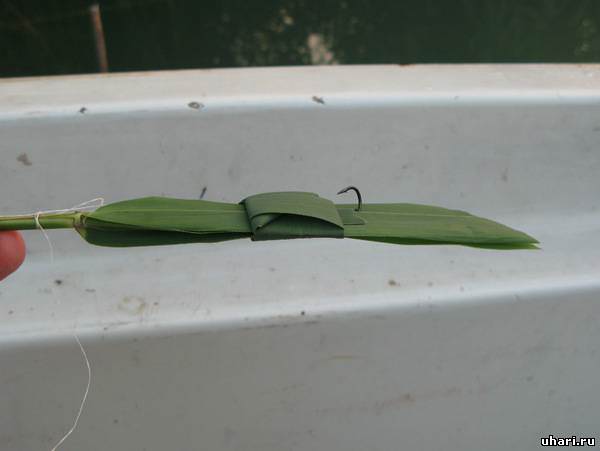
Reed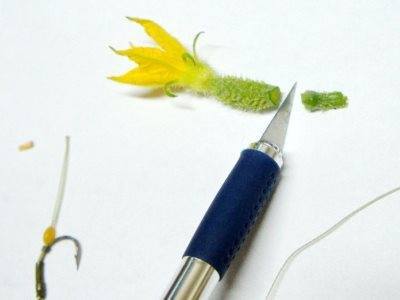
Cucumber
Agave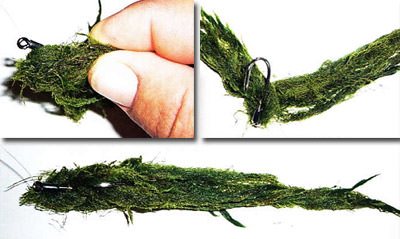
Seaweed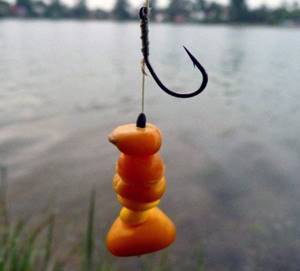
Corn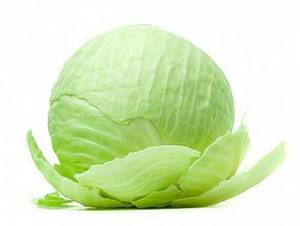
Cabbage leaves should be taken from the inside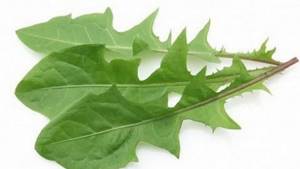
Dandelion leaves
Of the animals that have proven themselves well:
- Maggot.
- Worm.
- Crawling out.
- Bloodworm.
Considering the omnivorous nature of grass carp, it is very difficult to choose an effective bait at any particular moment, so it would be a good idea to have several types of baits with you, so that you can always replace them if there is no bite.
What to feed grass carp with?
A good result is achieved when the bait spot covers an area of several square meters with the concentration of food in the center. You need to remember that Amur is a rather large fish and it will not be easy to fit several individuals into a small area.
In the video, Sergey Popov feeds the flat with corn and boilies, but it suited the cupid in his pond. In his case:
For the 2nd day of flat fishing you will need at least 10 liters of boiled or fermented (drunk) corn. In addition, you can add boilies based on fishmeal 3-4 kg.
The list of components for bait can be very long. Most often used for cupid:
- Corn (raw, cooked, canned, fermented);
- Makuhu (makukha cubes, granules based on sunflower seeds);
- Boilies (there are no restrictions in choice, but most often based on fishmeal, corn, wheat and sunflower seeds);
- Plant components: sliced cucumbers, corn cobs, young pea leaves, clover, aloe (without thorns), etc.
Corn for bait and bait for grass carp
Corn for carp is often used when fishing with flats and floats. It cannot be said that fermented corn is better than boiled or canned corn and vice versa.
There are reservoirs and fishing grounds where the fish are better suited for regular grains; in other cases, drunken corn has no competition. It was not uncommon for baited carp and grass carp to leave when fermented, sour corn was added to the bait. Sometimes it's better to just boil the grains.
Fishing Features
When they first started breeding grass carp, it was difficult to catch it, due to the specific tastes of this fish regarding food. But after some time, his food supply expanded, and he began to take baits traditional for fishermen.
The best bite occurs in the morning and evening , but occasionally circumstances force him to look for food even during the day. Catching cupid must be approached with all responsibility, due to the fish’s excessive timidity. If a body of water is rich in food, it is unlikely to pay attention to the food offered by the fisherman.
Tips and tricks
- When biting large specimens, you need to avoid any sudden movements on the shore, because cupid is very timid and can react in the most unexpected way, which can result in the gear breaking.
- When using bottom tackle, you need to make sure that the bait is just above the bottom vegetation. This can be achieved by tying a small piece of foam near the hook.
- If you use a wide bait as bait , for example, a cabbage leaf, you need to be a little more careful. A slight twitch of the tackle indicates that the fish, without fear of anything, is eating the bait. You need to do the hooking immediately.
- There is no need to fuss when fishing for large specimens . First you need to try to reel the fish away from the shore. This is done by loosening the friction brake, this gives the fish the opportunity to calm down without losing control of it.
- When using a float rod, it is recommended to play with the bait from time to time.
In general, there are a lot of components for good grass carp fishing, but it’s worth it. Even one caught grass carp brings unprecedented pleasure to the fisherman, and the adrenaline level jumps to incredible heights.
